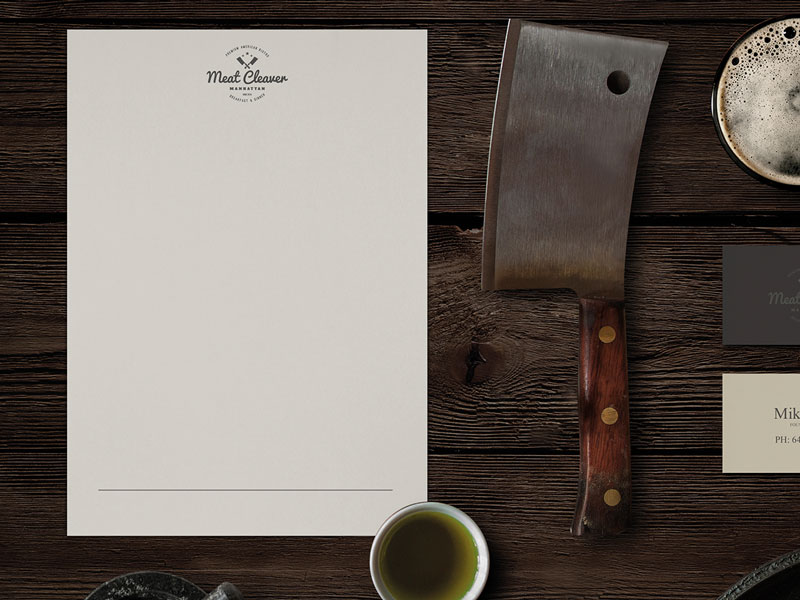Spellbrand Blog
Understand Your Buyer’s Journey To Increase Sales!

Any marketing endeavor starts with and should start with understanding how your buyers actually come to buy the services or products that you are trying to market. This process a buyer goes through from needing something and ultimately making the purchase is called the “Buyer’s Journey” and it is one of the fundamental pillars of our Brand Immersion Marketing™ methodology.
To clearly illustrate this journey and how it impacts your marketing efforts, I have chosen an example of my own buyers journey in purchasing a camera for my travels. I love to travel and do so at every opportunity. My favorite destinations are in Europe and I love taking copious amounts of photos during these trips.
There are three stages of a buyer’s journey – the Awareness Stage, the Consideration Stage, and the Decision Stage – which we will explore in detail. You should also be aware of the various phases of the sales funnel and how audience move from top of the funnel to making a purchase. Please note that understanding the buyer persona and [brand archetypes](https://spellbrand.com/brand-archetypes) will be critical to your success. Also read this article on the audience journey.
THE AWARENESS STAGE
Every buyer’s journey starts with the Awareness Stage or also called awareness consideration and decision phase during which a buyer would have realized and expressed the symptoms of a potential problem or opportunity. In this case, my problem was the heaviness of my Canon 7D DSLR camera that I have had for quite some time and which has traveled with me around the world. Eventually, the camera started becoming a hindrance due to its bulkiness and the several different lenses that I had to take along with me.
My pain point:
A heavy camera means I do not take as many photos as I used to and hence have regrets not capturing experiences as much as I would like to.
In the “awareness,” stage buyers and not ready for the purchase decision and would start some research focused on vendor-neutral 3rd party information around identifying problems or symptoms. In my case, I started searching for alternatives to the DSLR which would give me the same kind of quality photos and control over the camera (such as being able to set the aperture, shutter speed and so on).
During the awareness stage, buyers usually read editorial content (blogs, articles), educational content (blogs), analyst reports, research papers, e-guides and ebooks, expert content and white papers.
In my case, I found several useful articles on travel photography, equipment used, experiences, suggestions and how people achieved the stunning photos that they were proud of.
Keywords that are typically used during the awareness stage are:
troubleshoot, issues, resolve, risks, upgrade, improve, optimize, prevent and so on.
Key Takeaway for your business:
for attracting buyers in the awareness stage, write blog posts or articles on industry-specific useful topics focusing on educating your buyer – NOT on your product or service but rather on general topics.
For example, if you are a clothing brand and sell stylish gentlemen clothes, then you could write blog posts or ebooks on “7 Timeless Fashion Tips for Young Men” or “How and when to wear a blazer as opposed to a suit jacket” and so on.
The objective with these is not to sell anything but rather to give away free information which is of value to your buyers. This will establish trust with your buyers as well as elevate your brand to the status of an expert or authority in their minds.
THE CONSIDERATION STAGE
Having clearly defined and given a name and shape to the problem or opportunity, the buyer is now committed to researching and understanding all of the available approaches/methods to solving their defined problem or opportunity.
In my case, having realized that I had a problem with the bulkiness of my DSLR camera and having read up on how people take amazing photos without the use of DSLRs on their travels, I wanted to find out more about the various compact cameras that people were using and what features were required to bridge the gap between DSLR and a compact camera.
Typically in the Consideration Stage, buyers would read comparison white papers, expert guides, live interactions, web cases, podcasts and videos.
In my case, I started reading up on the various brands of cameras that had high-end compacts with features similar to the DSLR. This included watching videos of people claiming to get DSLR quality photos from compacts, vacation videos, experimental videos etc.
Keywords that are typically used during the consideration stage are:
solution, provider, service, supplier, tool, device, software, appliance and so on.
Key Takeaway for your business:
for attracting buyers in the consideration stage, write blogs posts or offer ebook downloads on topics which actually help your buyer structure a solution in their minds. Again, here you are not selling them anything. You are not offering any discounts or coupons etc.
Taking the same example above, if you are a clothing brand then you could be writing about topics such as “How To Buy A Casual Summer Button-down Shirt” or “Ultimate Guide To The Bow-Tie” and so on. You will notice that these pieces are more directly associated with items that you may be selling.
THE DECISION STAGE
Having defined their solution strategy, method or approach, the buyer would start researching supporting documentation, data, benchmarks or endorsements to make or recommend a final decision. In my case, I started comparing cameras in similar categories with different brands such as Canon, Sony, Lumix, Olympus and so on.
Typically during the decision stage, having made up their mind to make a purchase, buyers would read vendor comparisons, product comparisons, case studies, trial downloads, product literature and even opt for live demos.
In my case, I was looking for benchmarking reports or videos that proved which of the brands was better. At the forefront were Canon and Sony. Since I already had a Canon camera and two more prior to the 7D, I was more inclined towards the Canon G16 and the Canon Powershot G15.
Keywords that are typically used during the consideration stage are:
compare, Vs., versus, comparison, pros and cons, benchmarks, reviews, test, complaints, issues and so on.
In my case, a series of videos I found on Youtube – crafted and curated by Sony – showed me the merits of their Sony RX100 Mark 2 camera which was being touted as the best compact camera ever! These videos included in-depth feature reviews by Sony, unboxing and testing videos by the general public and in-depth camera comparisons and reviews by Sony affiliates.
And although the RX100 was around $200 more expensive than the Canon alternatives, I pulled the trigger and bought the Sony RX100 M2. Ah! The power of inbound marketing!
Key Takeaway for your business:
for enabling buyers in the decision stage to choose your brand, service or product, write in-depth comparisons between your service and perhaps your competitors, show case examples of your service or product, list customer testimonials or videos, create videos that test your service or product etc.
Going back to the clothing brand, you should post “look books” pairing together various pieces of garnets you sell and build stories around how well they go together and what the buyer would experience and feel. Write about the process each garment goes through and the quality materials you use.
Write about or make videos of your handmade items and the care and passion that goes into each piece and so on. Here is a great example:
Hopefully by now you appreciate the importance of the buyers journey and how it helps you generate content that is appropriate to the each stage and how it fits the psychology of the buyer in that stage.
Remember, Brand Immersion Marketing is all about the pull of inbound marketing and not about the push and interruption of the traditional marketing methods.
It has been a few months since I bought my Sony RX100 M2 and I have already tested it out on my recent trip to Madrid and Toledo in Spain and I must admit I am loving it. It sits unobtrusively in my pocket and I whip it out at every opportunity. It lets me have full manual control of the features and I can tweak and configure every aspect to get the right photos depending on the the available light and so on. Best part is that I do not have to lug around a 5KG should bag anymore and I have felt a new sense of freedom during sightseeing. Here are a few photos from that trip:

Mash Bonigala
Creative Director & Brand Strategist
With 25+ years of building brands all around the world, Mash brings a keen insight and strategic thought process to the science of brand building. He has created brand strategies and competitive positioning stories that translate into powerful and stunning visual identities for all sizes of companies.
Featured Work
See Our Work in Action
Real brands, real results. Explore how we've helped businesses transform their identity.
Client Love
What Our Clients Say
Don't just take our word for it. Hear from the brands we've worked with.
Josh Amburn
Lakefront Docks and Lifts
"I came into this project expecting to get the best logo for our brand. That’s exactly what I received. The team at SpellBrand used the descriptions of what we do along with a color palette of our site to design three amazing concepts. Once we decided on what worked best for our needs, they worked diligently to perfect the design. Their use of their project management software makes the collaboration painless. Great work team! We’ll see you on the next project! Josh"
Tom McGee
PD Campus
"We tried several designers to design our logo and could not find the one that fit our company. After a few years of searching for a good branding company, I found Spellbrand through a random search. Spellbrand was sensational! They took the time to listen to our story and created a few designs that spoke to our team and what we do. We've never had a designer do that. We not only received a great logo, but we now have a brand we are all proud to wear! Thank you!"
Related Services You Might Love
Based on what you just read, here are services that can help you achieve similar results for your brand.
Keep Reading
Related Articles
Nov 19, 2025
What are paths and anchor points in Adobe Illustrator?
Master the fundamentals of paths and anchor points in Adobe Illustrator. Discover expert strategies and insights to help your business succeed.
Read MoreNov 17, 2025
Use Of Color In Creating Logo Designs
Master the psychology of color in logo design.
Read MoreNov 17, 2025
Developing a Jewelry Logo
Learn how to create a jewelry logo that captures elegance and sophistication. Discover expert strategies and insights to help your business succeed.
Read More

